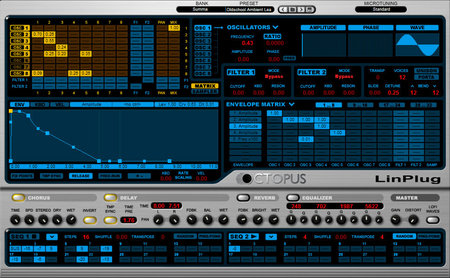Ableton Plugins Folder Mac
Press the Rescan button to let Ableton Live rescan the folder where your Native Instruments plug-ins are installed. Once your custom VST folders scanned, your NI plug-ins will be available in the Third Party Plug-ins section of Ableton's Browser. Note: Read this article to learn how to insert Native Instruments plug-ins in Ableton Live.
Ableton comes with an impressive, diverse and extremely usable set of instruments, effects and samples. However, at some point you will almost certainly want to install 3rd party plug ins to get that sound you need.
Most plug-ins will install themselves to the default system folders, others might simply need to be moved to the correct folder. Here are the default system. Adjusting the Ableton Live Lite Plugin Sources. Note for Windows users only: If you have difficulty locating your plugin in your Plug-Ins category within Ableton Live 9 Lite, be sure Ableton Live 9 Lite is reading plugins from the correct location where your plugin is installed. To do this: Open the Preferences menu in Ableton Live 9 Lite MAC. 32-bit plug-ins: C:Program Files (x86)VSTPlugins; Mac: Macintosh HD Library Audio Plugins VST; If you're using a custom VST folder you need to locate the WaveShell file and move it to your custom VST folder. Then re-launch Live if it's already running. This will scan the Waveshell and activate all available Waves plug-ins in the browser. See this tutorial on the Wave's site: How to use Waves plugins. For Mac users, simply toggle On the button next to Use VST Plug-in System Folder if it is not on already, and/or toggle On the box for Use Audio Units. Ableton will point automatically to the following locations to find your plugins. If using VST2 or VST3, enable the correct folder (System or Custom). If using Audio Units (AU), enable the system folder. Using AU and VST plug-ins on Mac. Live Versions: All Operating System: Mac AU or VST? How to install VST or AU plug-ins on Mac; AU or VST? Live on Mac supports both the Audio Unit (AU) and VST2 and VST3 (10.1 and later) formats.
Luckily for you, the process of adding 3rd party plug-ins on a Mac is extremely straight forward. download torrent gogglebox au season 6 It is literally a case of copying the plug in files into the Mac plug in directory. Once this is done Ableton will automatically find your plug-ins ready to use.
Where is the Ableton Plug ins folder?
The truth is there isn’t one specifically for Ableton, it’s a shared plug ins folder in you Mac Library. By default the folders used to contain plug-ins, and where you need to copy them to, are:
(for AU) Library > Audio > Plug ins > Component
(for VST) Library > Audio -> Plug ins > VST
Setting a custom plug in folder
In Ableton there is also the ability to set a custom location for your plug ins folder. This is handy if you have multiple DAWs installed on the same Mac, or if you just want to use a different hard disc, perhaps a solid state to run them from.

In the Ableton top menu go to:
Preferences > File Folder > VST Plug-In Custom Folder
Make sure to enable the feature, and you can now copy plug ins to any location you like.
For more great Ableton tutorials, why not subscribe to this blog and sign up for E-Mail updates!
PROCESS.AUDIO plug-ins are compatible with Ableton Live 8 and above in 64-bit mode ONLY.
1. PROCESS.AUDIO plug-ins are 64-bit only. So make sure you are NOT running your DAW in 32-bit in a 32-bit environment. Ableton Live 8 and 9 need to be installed with their 64-bit installers whereas Ableton Live 10 is already 64-bit only.
2. Make sure your plug-ins are installed in the correct and default locations:
Live 8 and 9 only use VST2 plug-ins wherease Live 10+ can use VST3 plug-ins.

MAC
/Library/Audio/Plug-Ins/Components/ (AU)
/Library/Audio/Plug-Ins/VST/ (VST2)
/Library/Audio/Plug-Ins/VST3/ (VST3) Live 10+ only
WINDOWS
C:Program FilesVstplugins (VST2)
C:Program FilesCommon FilesVST3 (VST3) Live 10+ only
3. Close Ableton, and then right-click and select ‘Run as Administrator’ (you will only have to do this once). If the plug-ins show up at this point, you're set. If not, move on to the next step.
4. Open Live's Preferences > Plug-ins (Live 10.1 and later) or > File Folder (all Live versions until 10.1). Try to spot the Plug-In Sources section (usually at the bottom of the pane).
WINDOWS
If using Live > 10 and VST3, enable the System folder. This is where your PROCESS.AUDIO plug-ins are installed by default (C:Program FilesCommon FilesVST3).
If using a VST3 or VST2 Plug-in Custom Folder, make sure your PROCESS.AUDIO plug-ins are actually installed in this folder and switch it on (usually C:Program FilesVSTPlugins).
How To Install Vst Ableton Mac
In any event, make sure to switch ‘Off’ both VST2 and VST3 locations first, hit Rescan, then switch them back ‘On’ and hit Rescan again.
How To Add Plugins To Ableton 10
MAC
If using Audio Units (AU), switch ‘Use Audio Units’ on. Deckadance tutorial en español.
If using the VST2 or VST3 Plug-in system folder, switch this on.
If using a VST3 or VST2 Plug-in Custom Folder, make sure your PROCESS.AUDIO plug-ins are actually installed in this folder and switch it on (Usually /Library/Audio/Plug-Ins/VST/).
Trick: Hit Rescan while pressing the Option key. It will force a deeper full rescan
In any event, make sure to switch ‘Off’ both VST2 and VST3 locations first, hit Rescan, then switch them back ‘On’ and hit Rescan again.
Ableton Plugin Folder Mac
4. If everything fails, remove the plug-ins manually, trash the plug-ins, rescan, re-install them with the PROCESS.AUDIO installers and hit rescan again.